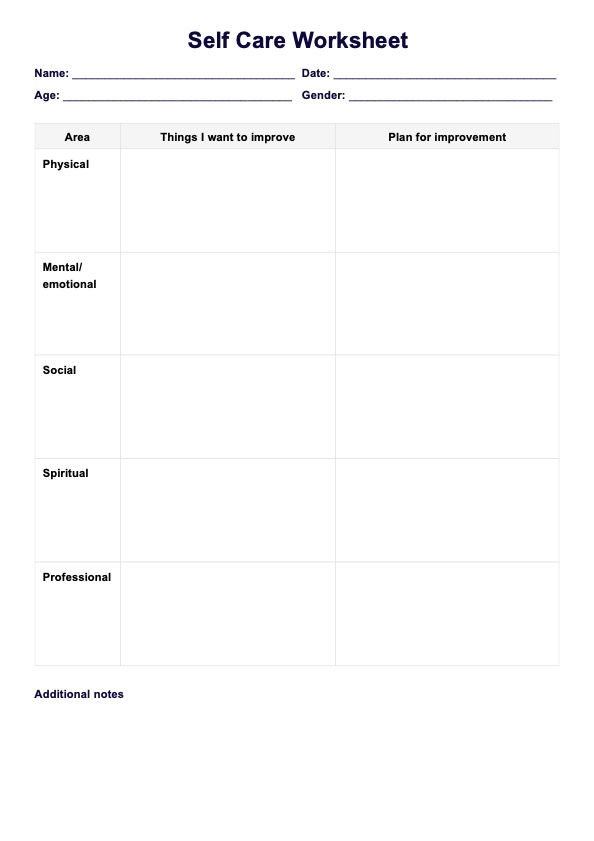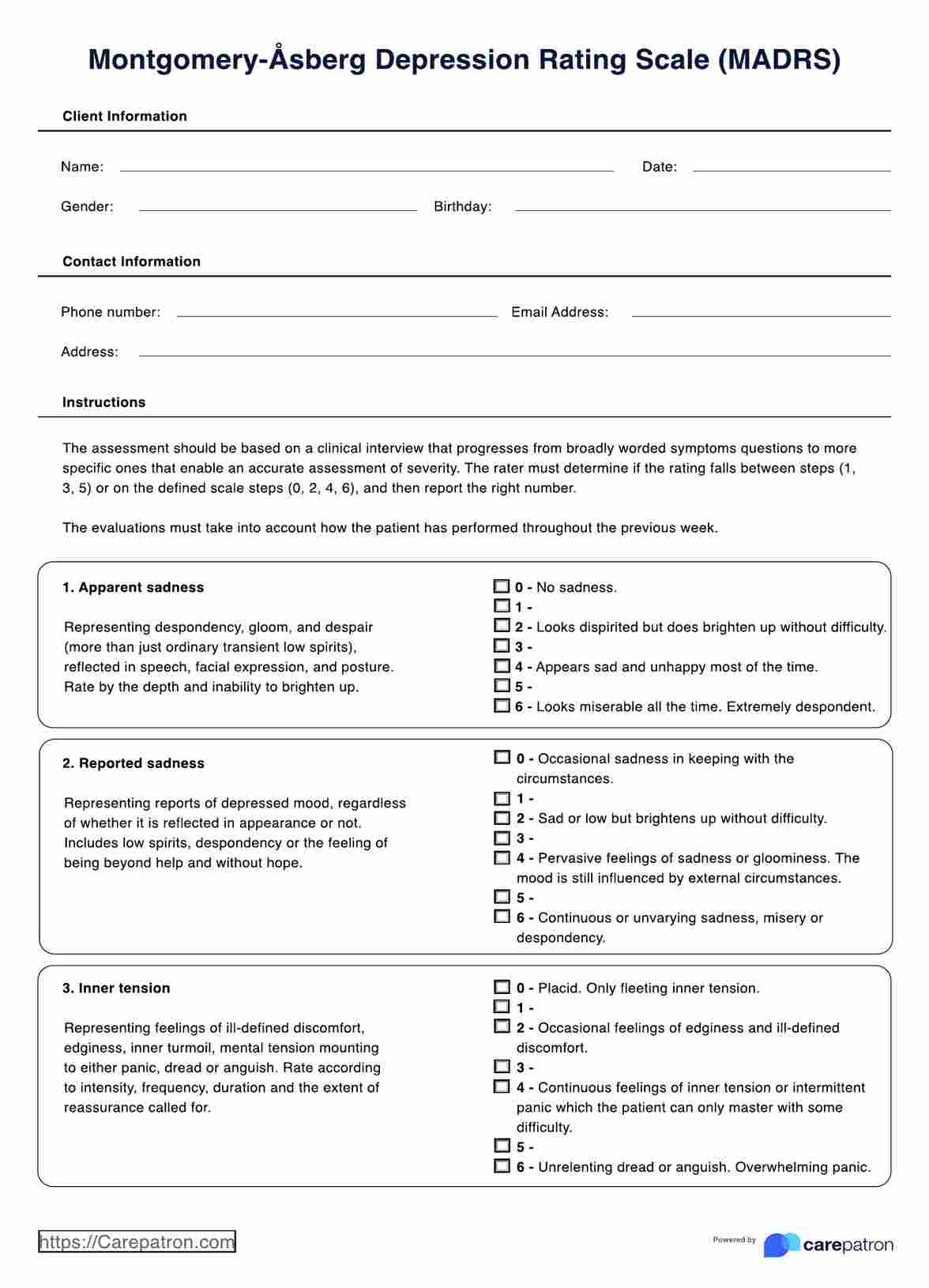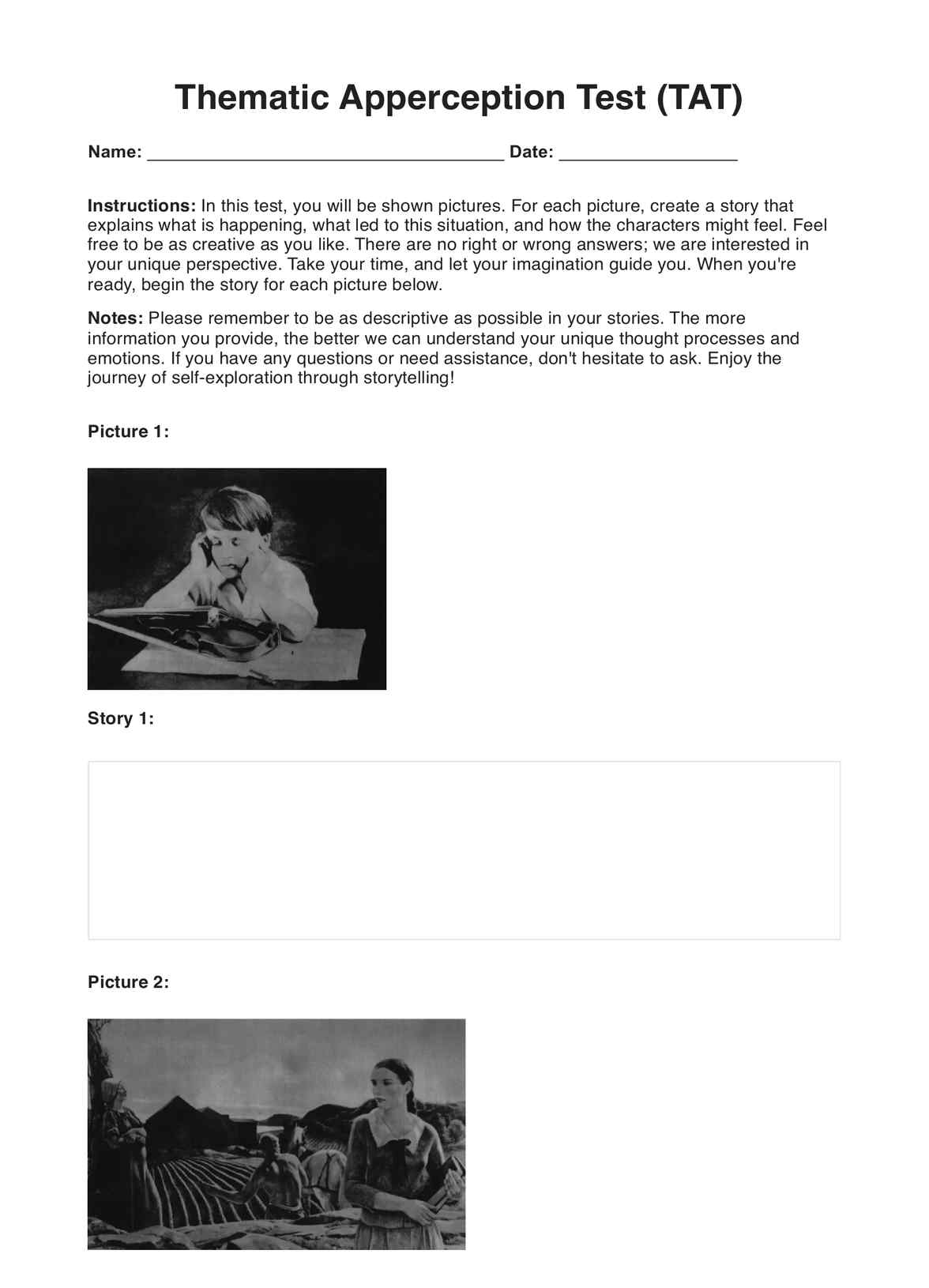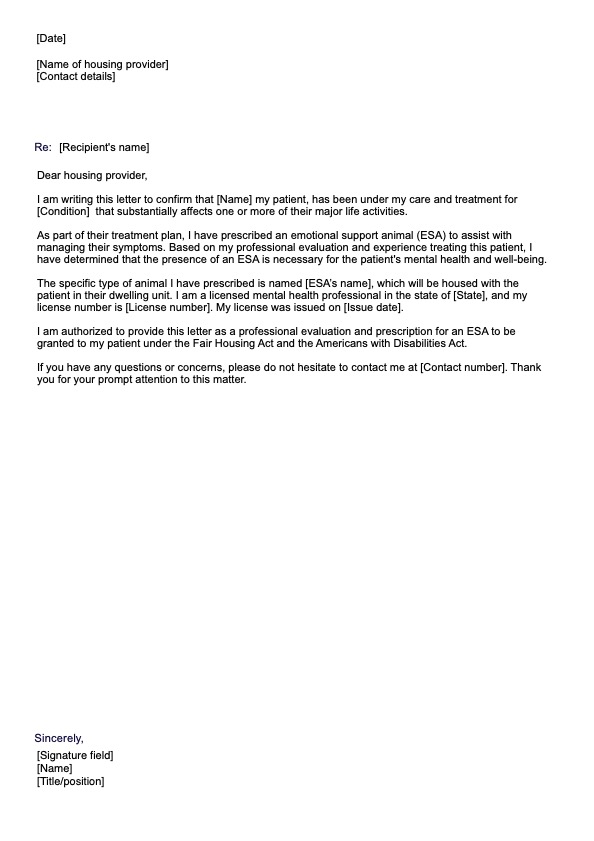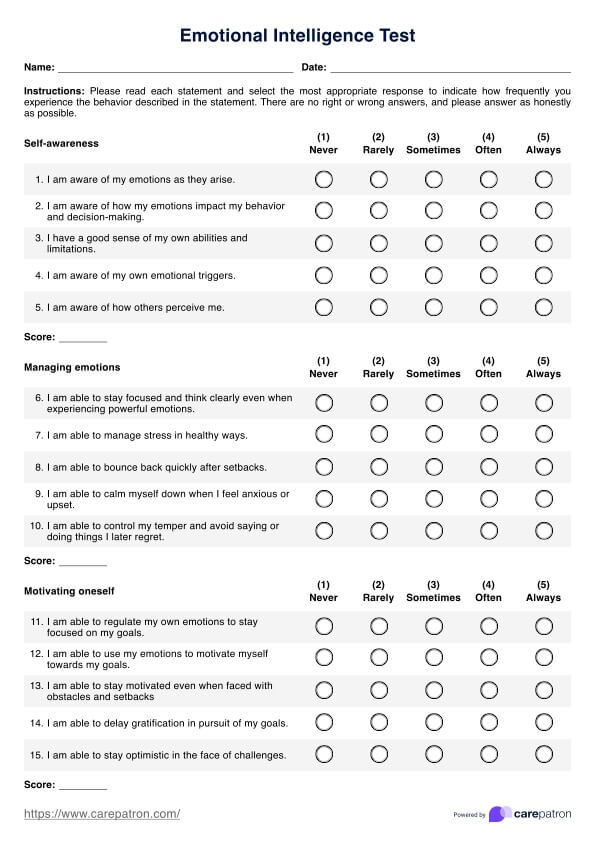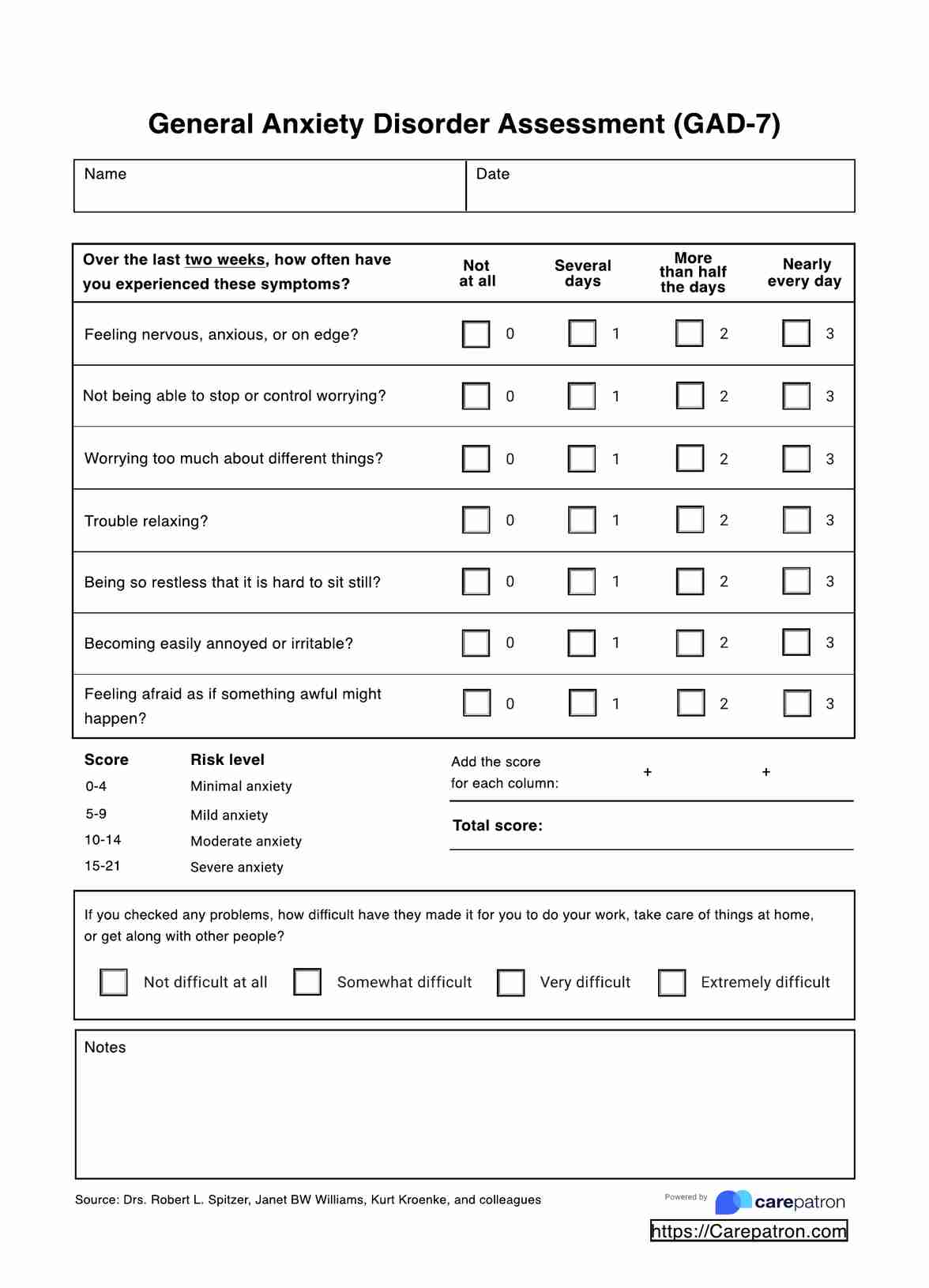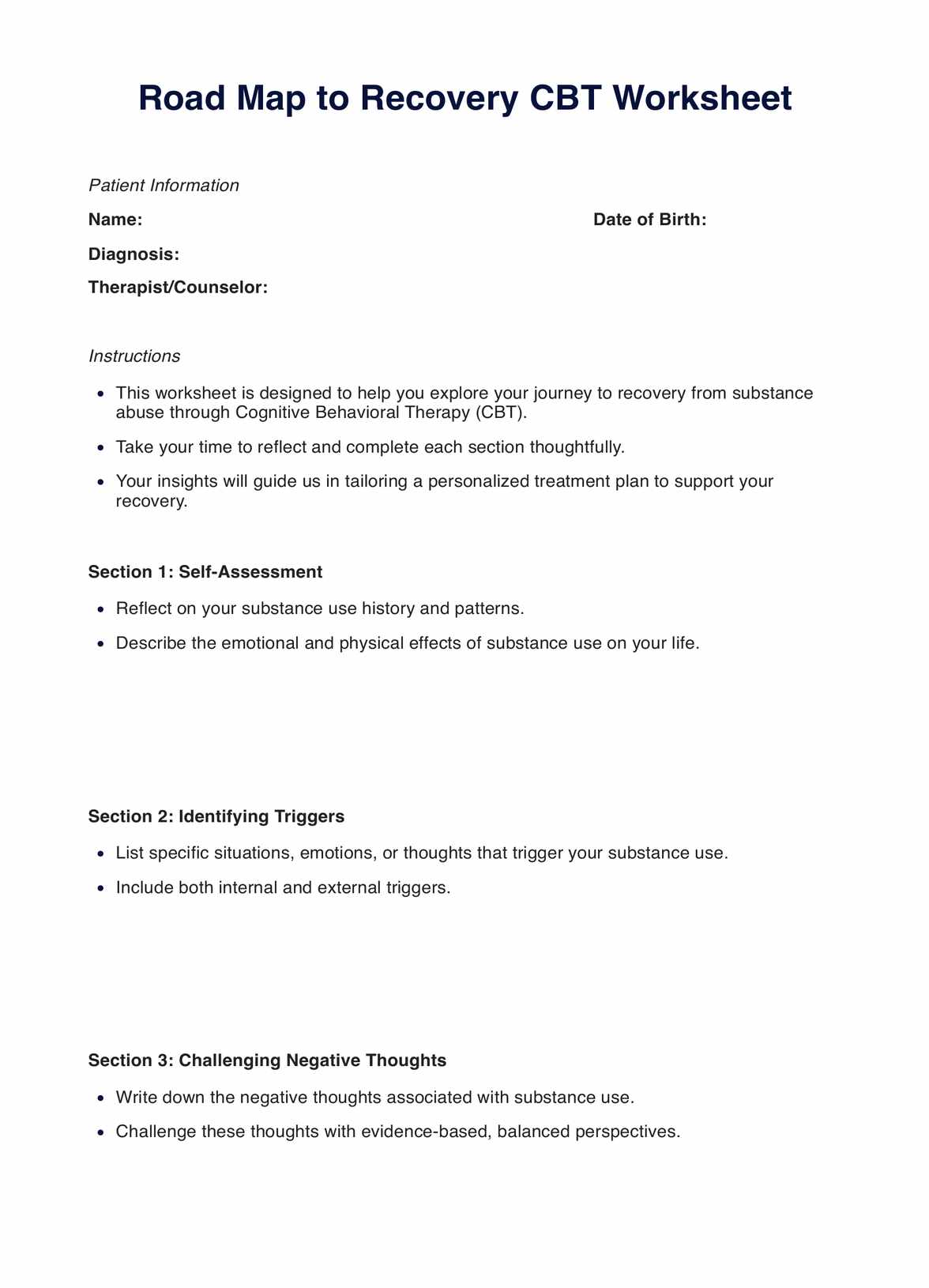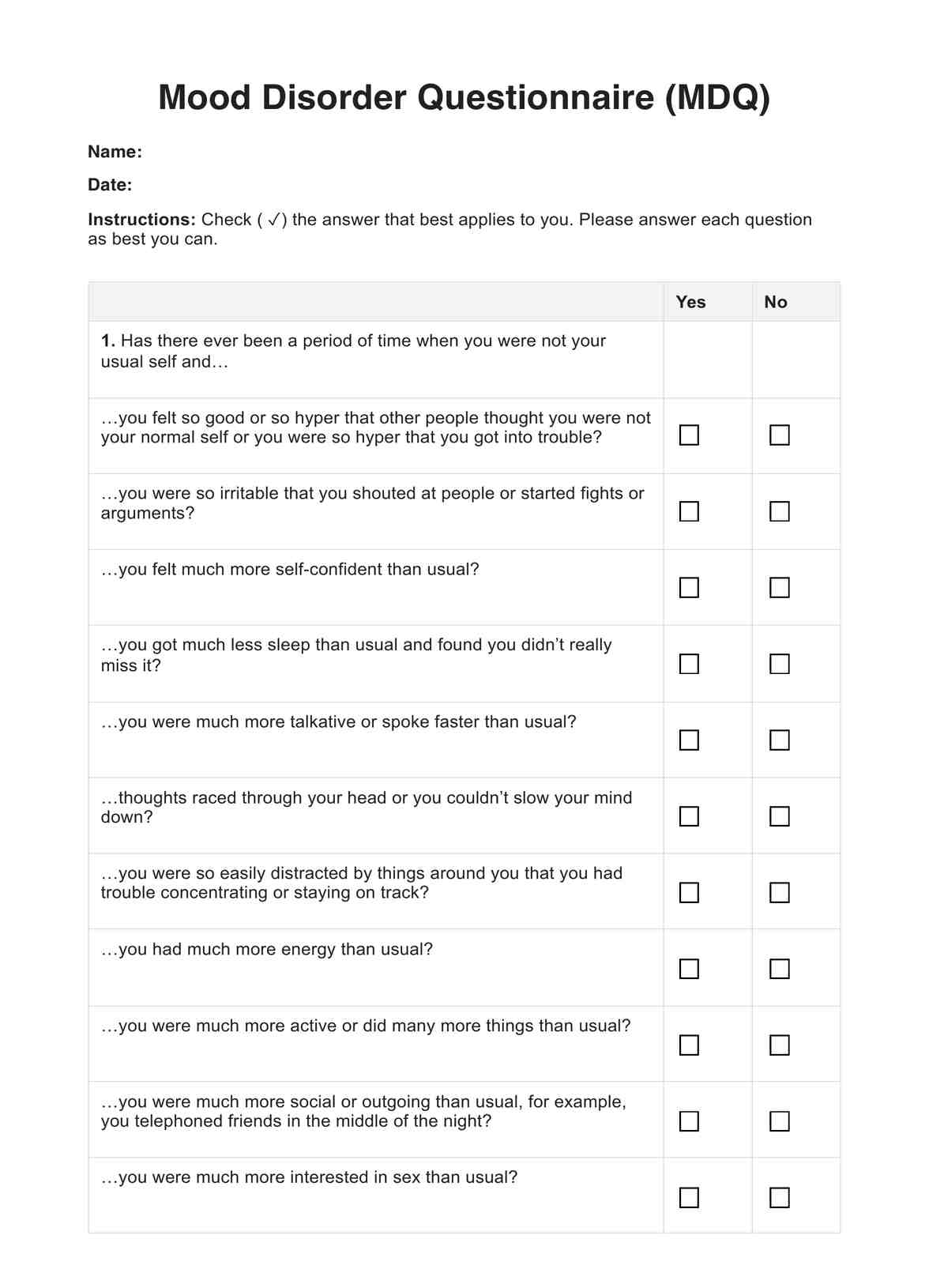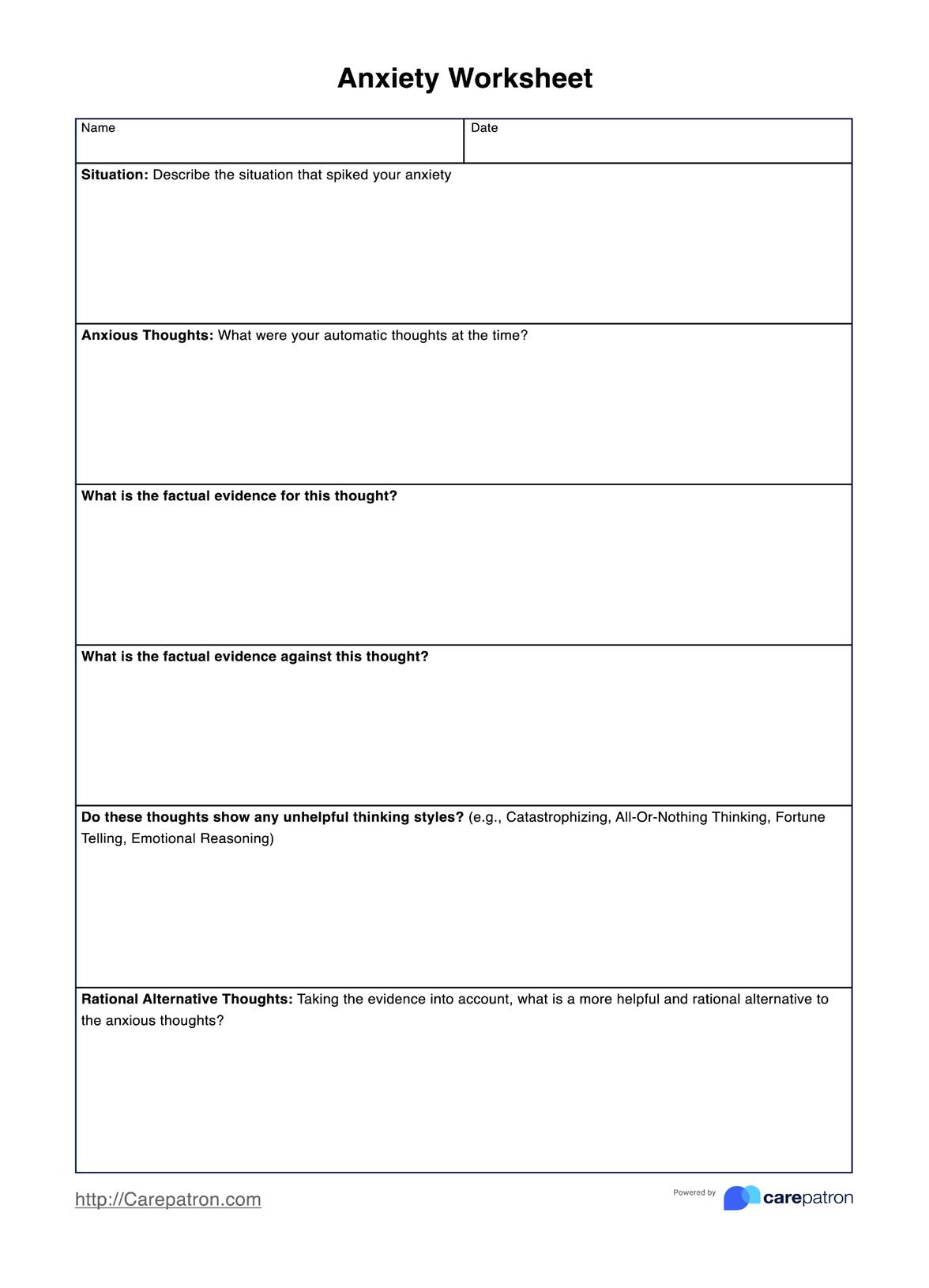Codependency Checklists
Unlock insights into relational habits with our Codependency Checklist PDF. Identify patterns & empower personal growth for healthier relationships.


What is a Codependency Checklist?
Codependency is a relational and psychological concept that describes a dysfunctional pattern of behavior in which individuals excessively rely on others for emotional well-being, validation, and a sense of identity. This reliance often stems from deep-seated emotional wounds or past traumas. Codependent individuals tend to prioritize the needs and desires of others to an unhealthy degree, often neglecting their own needs and boundaries in the process.
The consequences of codependency can be far-reaching, impacting emotional health, relationships, self-identity, personal growth, and even physical well-being due to chronic stress. The Codependency Checklist empowers individuals to embark on self-discovery and healing by shedding light on these detrimental patterns. It is a pivotal first step towards fostering healthier relationships, self-awareness, and personal development, aiming to break free from the cycle of codependency's adverse effects.
can illuminate the complex and often challenging issue of codependency in individuals' relationships. Before delving into how to use this checklist and its benefits, it's essential to understand codependency and how it can profoundly impact a person's life.
Codependency Checklists Template
Codependency Checklists Example
How to use the Codependency Checklist:
To effectively use our Printable Codependency Checklist, follow these steps:
Step 1: Get the Codependency Checklist
Start by obtaining the Codependency Checklist, which is available online. It's a structured tool for assessing codependent behaviors in patients' relationships.
Step 2: Understand the Questions
Review the questions in the checklist. These questions explore dependency, self-esteem, and boundaries in patients' lives. Familiarize yourself with them to guide patient discussions.
Step 3: Patient Self-Assessment
Help patients answer the questions honestly. Encourage them to reflect on their behavior and emotions in their relationships. Create a safe, non-judgmental space for this self-examination.
Step 4: Interpret Results
Use the checklist's scoring system to gauge codependency tendencies. Patients may fall on a spectrum from low to high codependency. Emphasize that results offer insights, not a definitive diagnosis.
Step 5: Recommend Support
If codependency tendencies significantly affect patients' well-being, suggest they seek help from mental health professionals like therapists or counselors. These experts can provide tailored therapy and strategies to address codependency effectively. The checklist is valuable for starting these conversations and promoting healthier relationships and mental well-being. Encourage patients to take this proactive step for their personal development.
When would you use this Form?
The Codependency Checklist is a versatile tool that finds applications in various contexts. It serves individuals as a means of personal self-reflection, helping them recognize and address codependent behaviors and fostering self-awareness and growth. Mental health professionals, therapists, and counselors rely on it for assessments, tailoring therapeutic approaches to suit individual needs.
Support groups incorporate it as a discussion tool, facilitating shared experiences and progress tracking. In family settings, it encourages open communication and healthier dynamics. Educational programs and workshops use it to educate individuals about codependency's effects on relationships. Rehabilitation centers utilize it to monitor client progress and adapt interventions accordingly.
Mental health clinics employ it for screening, addressing codependency alongside other concerns. Personal growth journeys benefit from their role in ongoing self-improvement and self-care. Peer support networks use it to provide empathetic assistance, while community outreach programs distribute it to raise awareness.
Online platforms offer it as a downloadable tool for self-assessment and community discussions. The Codependency Checklist effectively addresses codependency, promotes healthier relationships, and fosters personal growth and well-being in these diverse scenarios. Its versatile application empowers individuals, professionals, and communities to recognize and tackle codependency comprehensively.
Benefits
Here are four of the many benefits and applications of our Free Codependency Checklist:
Fosters Emotional Wellness and Healthy Relationships
The Codependency Checklist is valuable for promoting emotional well-being and healthier relationships. Using the checklist, individuals gain insights into their codependent behaviors and how they affect their emotional health. It facilitates self-reflection and awareness, empowering individuals to make positive changes in their relationships and reduce the risk of emotional distress.
Empowers Personal Growth and Independence
The checklist encourages the development of healthy habits, such as setting boundaries, improving communication, and nurturing self-esteem. Through consistent use of the checklist, individuals learn to establish and maintain healthy boundaries, communicate effectively, and enhance their self-esteem. This fosters personal growth and independence.
Boosts Self-Confidence and Self-Worth
Addressing codependency issues with the checklist can significantly boost self-confidence and self-worth. Individuals regain control over their lives and relationships by identifying and working through codependent patterns. This newfound self-assuredness positively influences how they perceive themselves and interact with others, improving their self-esteem.
Provides a Framework for Progress
The Codependency Checklist offers a structured framework for progress, serving as a valuable reference point to ensure that individuals take notice of critical aspects of their codependency recovery journey. By consistently using the checklist, they can track their progress and identify areas that require further attention or improvement.
Encourages Responsibility and Consistency
The checklist promotes a sense of responsibility for one's emotional well-being and relationships. By actively using the checklist, individuals take ownership of their codependency issues and commit to consistently improving.
Research & Evidence
Codependency is a complex psychological condition that eludes a singular, universally accepted definition, making diagnosis and comprehension challenging. Nevertheless, it exhibits several common characteristics: an excessive focus on others' needs, an inability to establish personal boundaries, a need to exert control over others, low self-esteem, difficulty in expressing emotions, a persistent fear of abandonment, and a history marked by unhealthy relationships.
The origins of codependency are multifaceted, involving factors such as childhood trauma, familial dynamics, learned behaviors, and co-occurring mental health conditions like anxiety and depression. Though our understanding of this phenomenon remains in its infancy, a growing body of research sheds light on its nature and impact.
For instance, a 2018 study found that codependency is associated with various adverse health outcomes, including heightened anxiety levels, depression, and low self-esteem. Additionally, a 2017 investigation revealed that codependency tends to be more prevalent among individuals with a history of childhood trauma, indicating a potential causal relationship. Notably, a 2016 study demonstrated that therapy can effectively address codependency.
While the research has made significant strides in acknowledging the existence of codependency and its treatment potential, there is still much to uncover. As we continue to delve deeper into this intricate condition, it is crucial for individuals who suspect codependency in themselves or others to seek professional help. Therapy offers a valuable resource for understanding codependency, developing healthier coping mechanisms, and fostering personal growth and well-being.
References
- "Codependency and Health Outcomes: A Systematic Review." By Megan L. Smith, et al., Journal of Family Psychology, Vol. 32, No. 6, 2018, pp. 849-860.
- "The Relationship Between Codependency and Childhood Trauma." By Sarah J. Hunter, et al., Journal of Personality Disorders, Vol. 31, No. 3, 2017, pp. 341-353.
- "The Effectiveness of Therapy for Codependency." By Stephanie S. Brown, et al., Journal of Marital and Family Therapy, Vol. 42, No. 2, 2016, pp. 204-218.
Commonly asked questions
Codependency checklists are commonly used by individuals who suspect they may exhibit codependent behaviors or are in codependent relationships. Therapists and counselors may also use these checklists as part of their assessment process when working with clients.
Codependency checklists serve diverse purposes: aiding individuals in self-assessment, assisting therapists in diagnosis during therapy sessions, acting as discussion tools in support groups, and enabling troubled couples or individuals to identify codependent patterns within their relationships. They are versatile tools for self-awareness, therapy, group discussions, and relationship evaluation.
To use a codependency checklist, individuals answer questions honestly, typically with "Yes" or "No" responses. After completing the checklist, they count the "Yes" responses to gauge the extent of codependent tendencies.


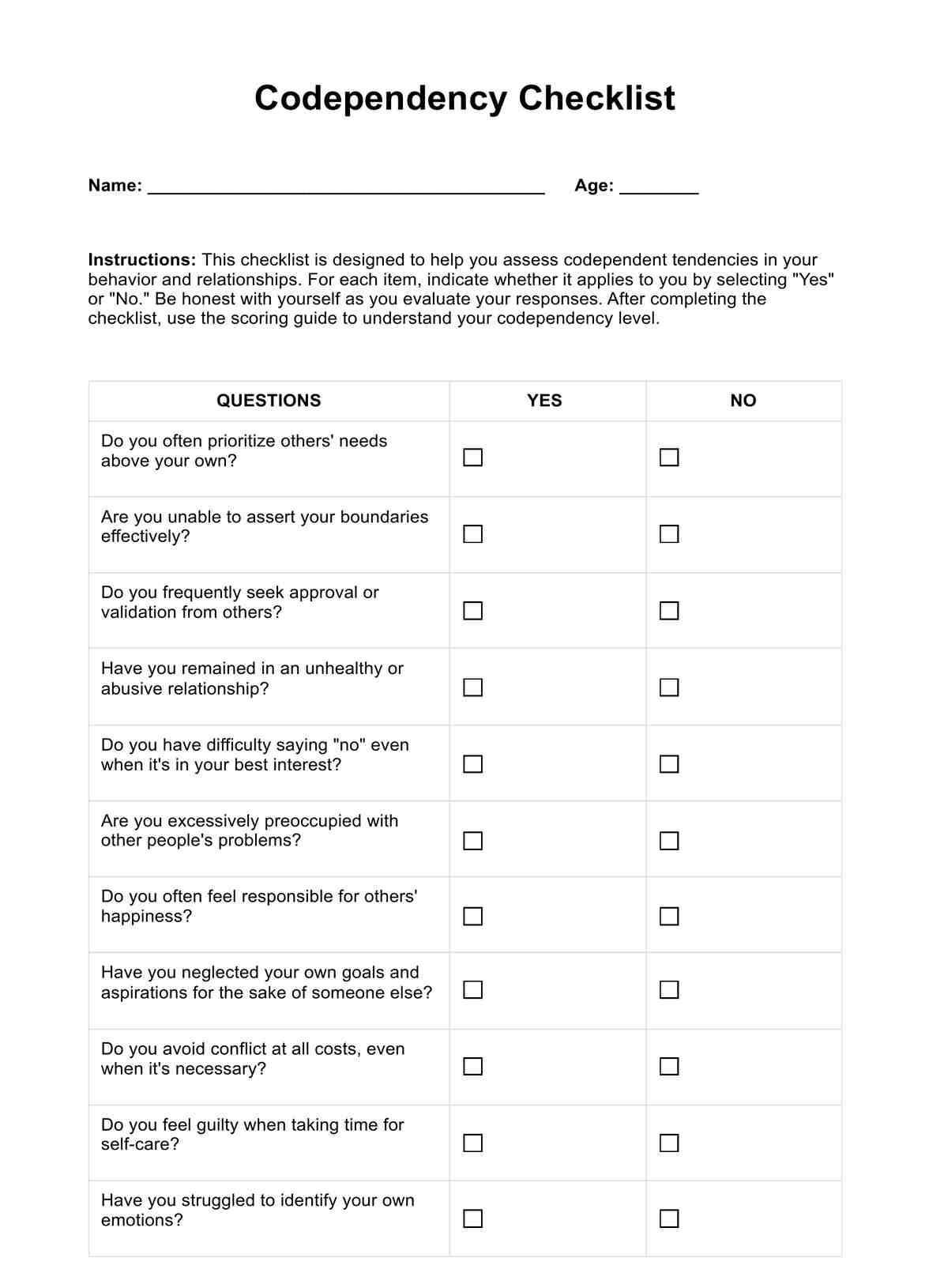
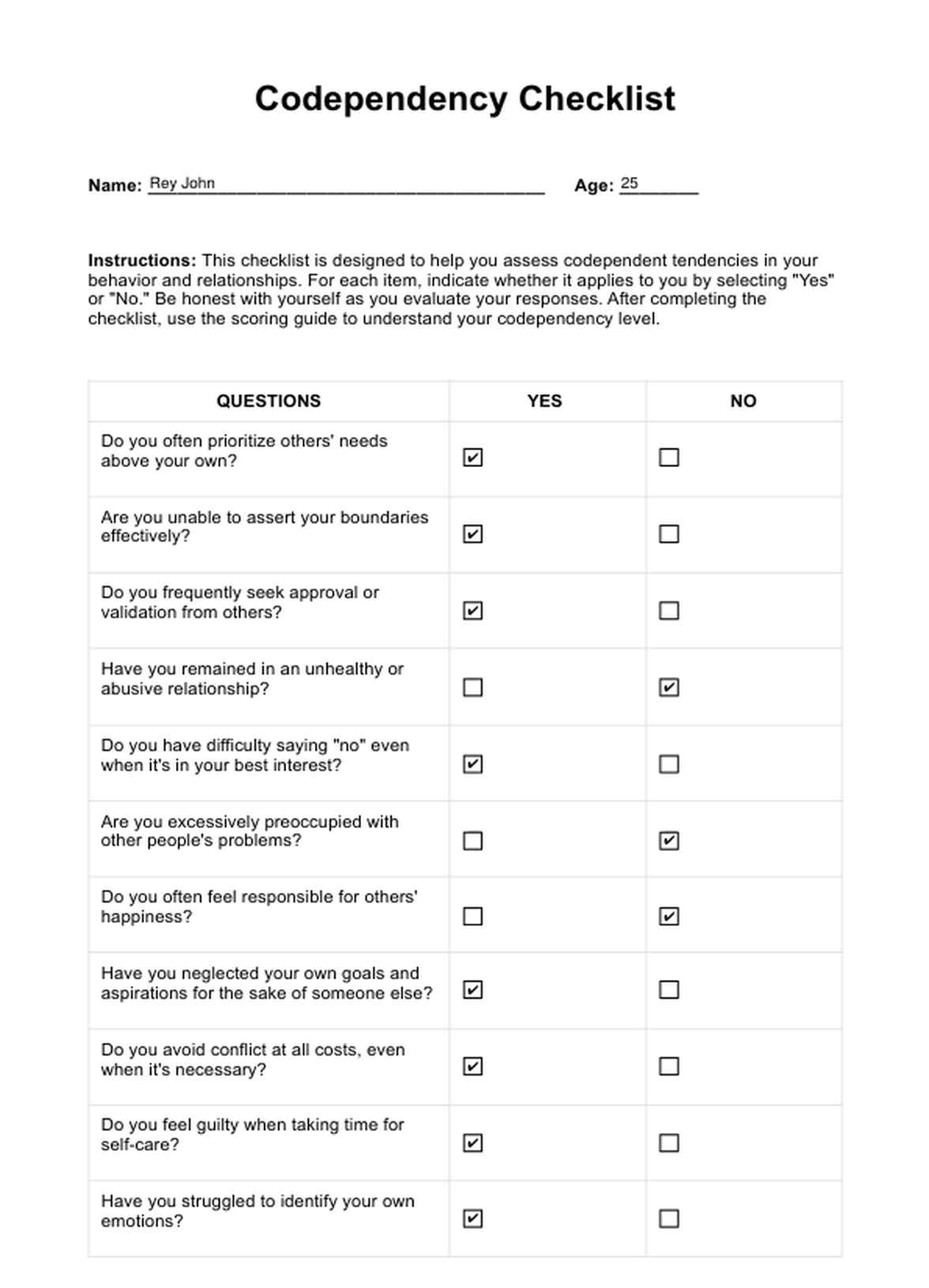

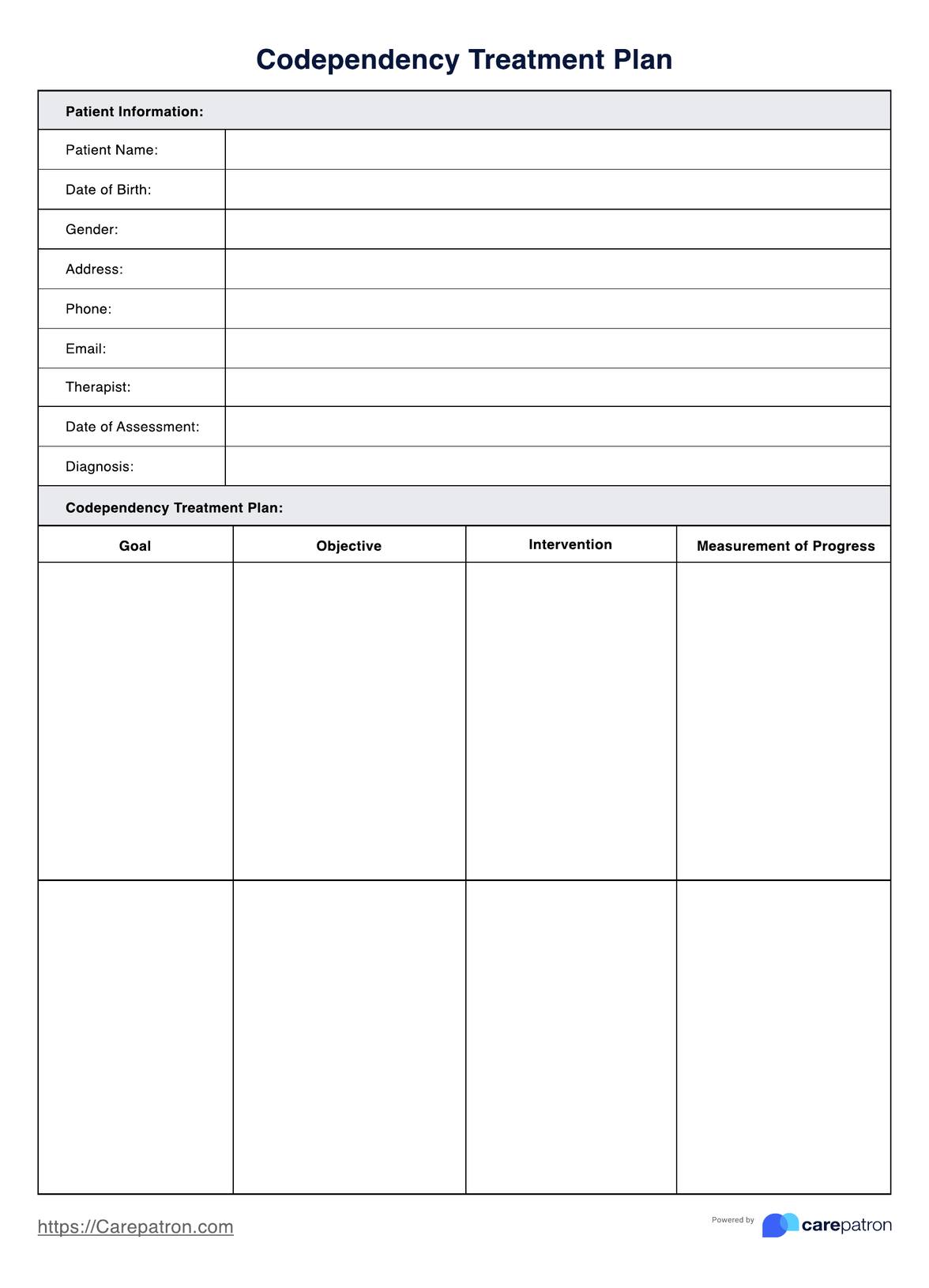
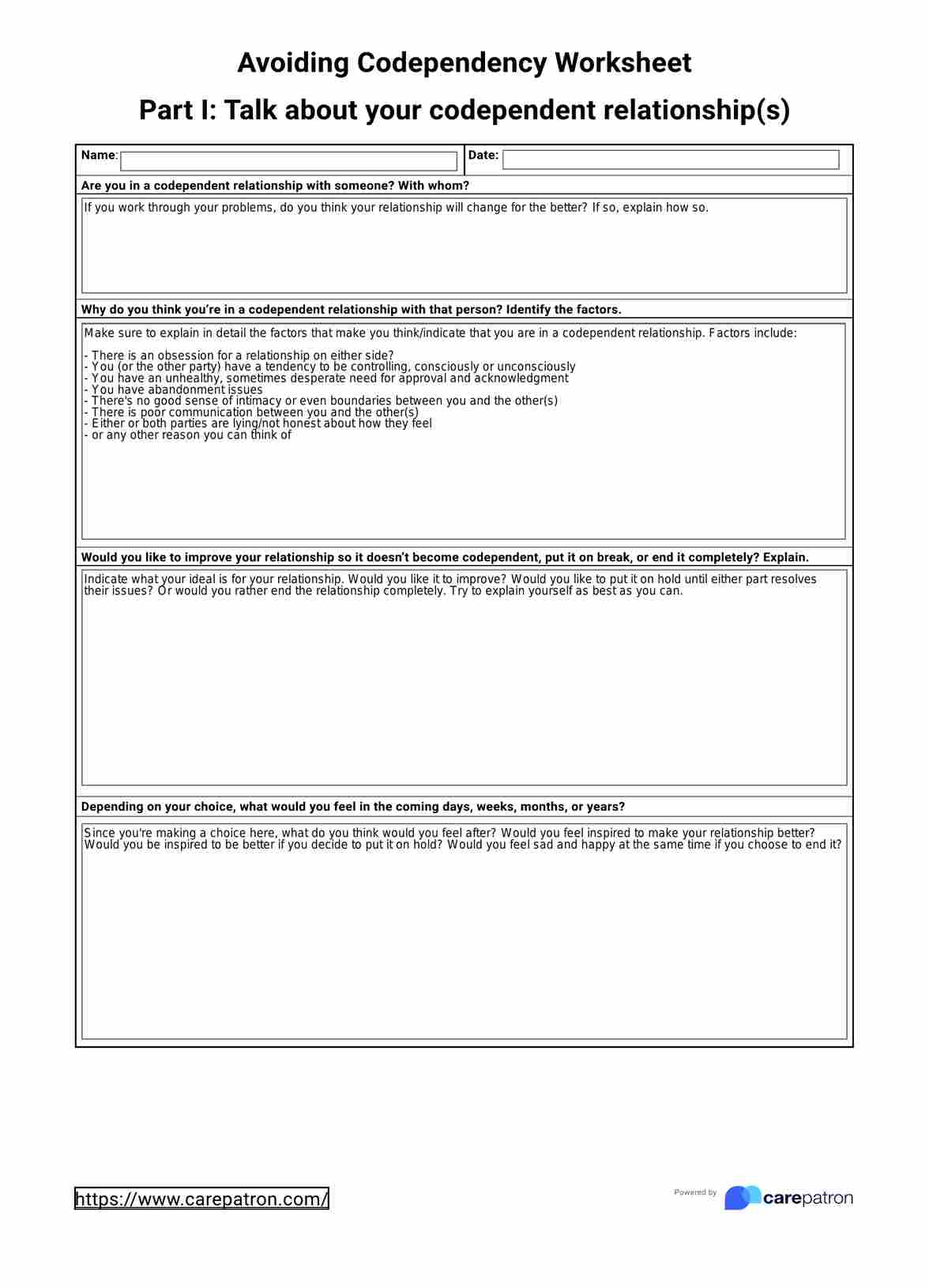
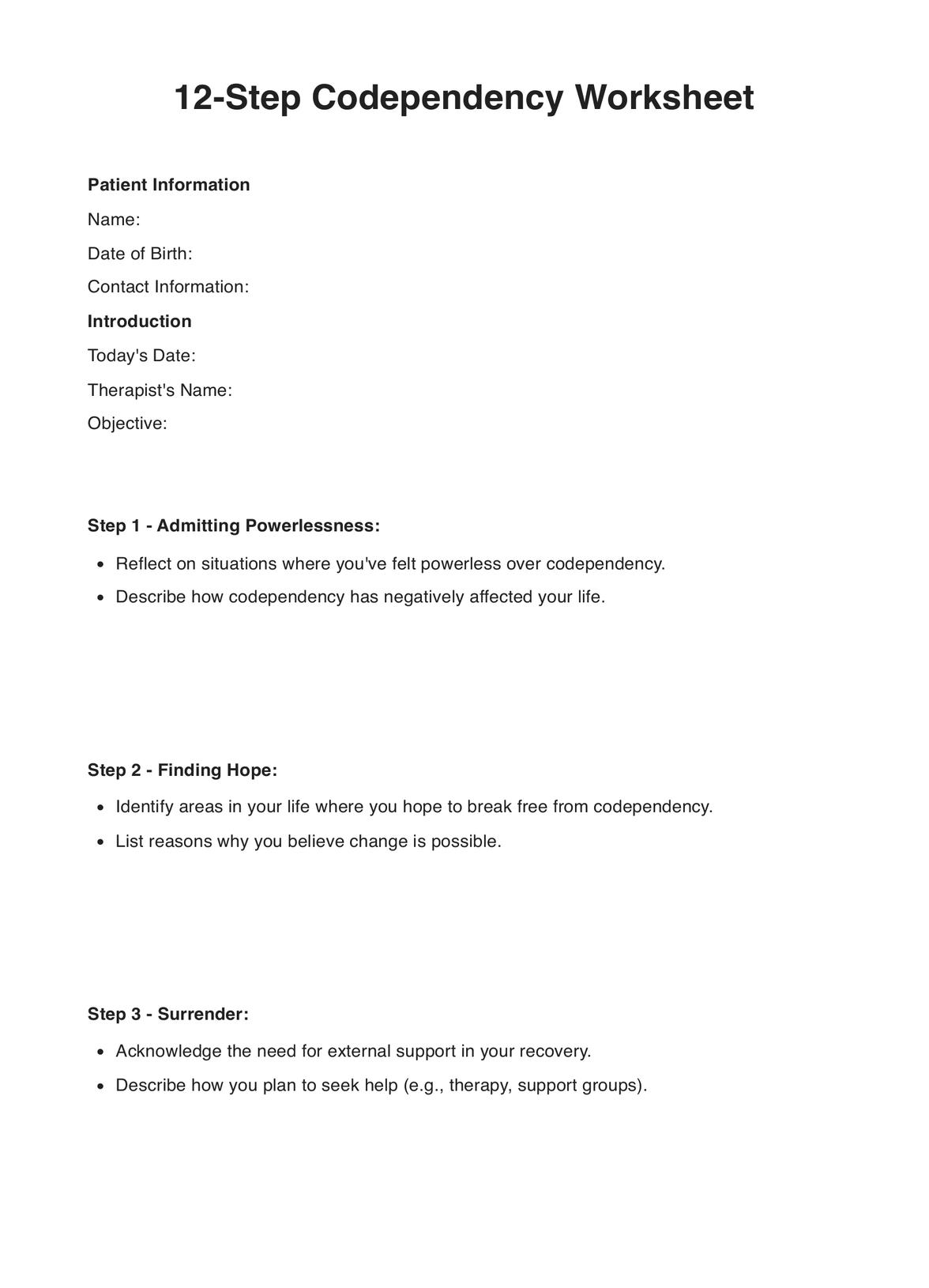














-template.jpg)





















































































